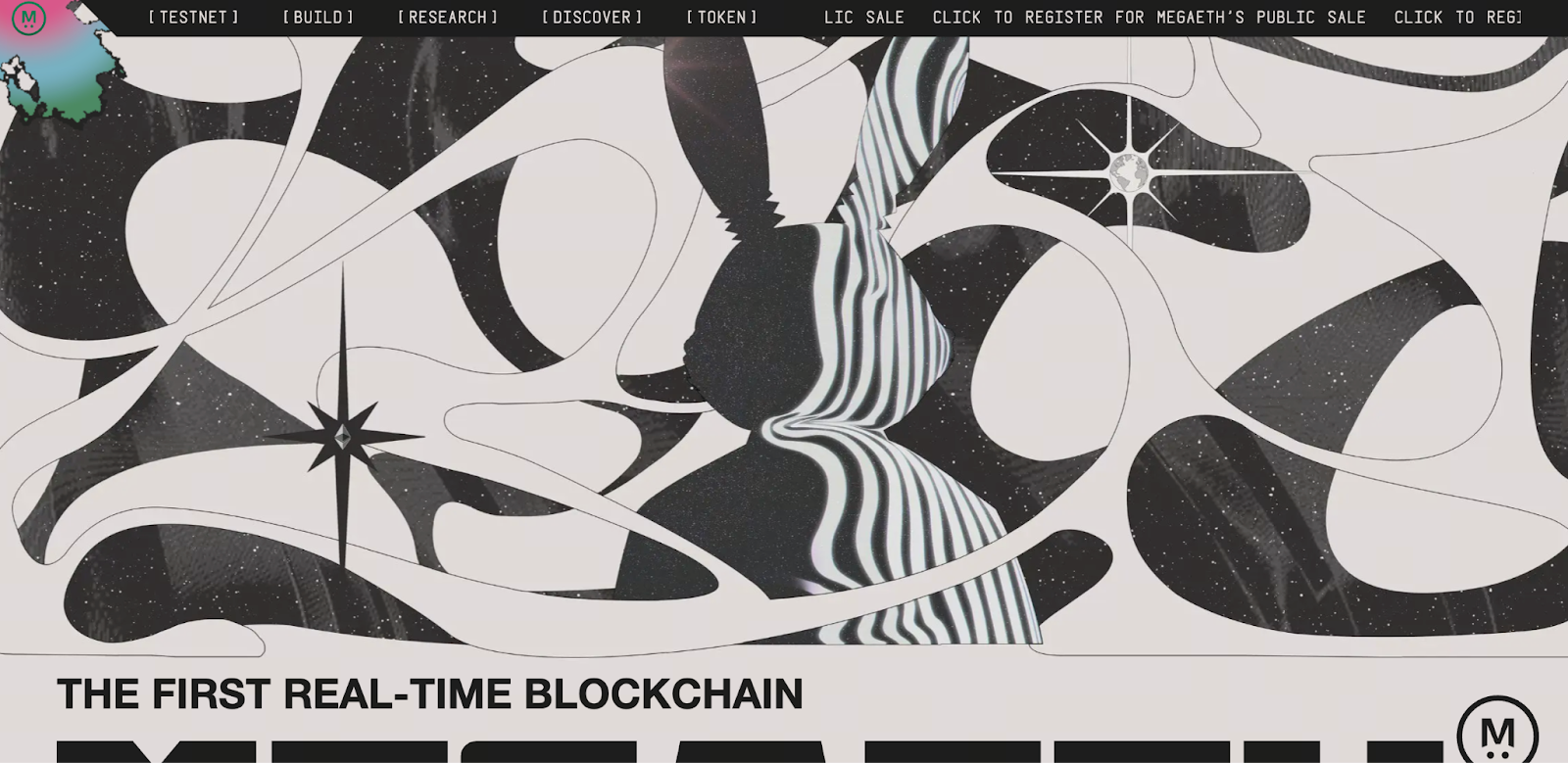MegaETH Project Deep Dive: The Potential and Opportunities of the Next-Generation Ethereum L2 Protocol
Why Pay Attention to MegaETH?

Source: https://www.megaeth.com/
As the Ethereum ecosystem rapidly expands, the need for Layer 2 (L2) solutions in the blockchain industry is intensifying. MegaETH positions itself as the next-generation Ethereum L2 protocol, targeting 100,000 transactions per second (TPS) and 10-millisecond block times. These goals support high-frequency trading, on-chain gaming, real-time social platforms, and other demanding use cases. The project’s whitepaper highlights its commitment to delivering a real-time blockchain experience.
MegaETH may be particularly appealing to those looking to get in early on blockchain infrastructure projects.
Key Technology Highlights: 100,000 TPS, 10 ms Block Time, EVM Compatibility
According to official documentation and the whitepaper, MegaETH features:
- A total supply of 10 billion MEGA tokens.
- 5% of the supply (500 million tokens) will be offered in a public auction.
- Purchases are made with USDT on the Ethereum Mainnet.
- Technically, MegaETH uses an Optimistic Rollup architecture, maintains EVM compatibility, and aims to greatly improve throughput while minimizing latency.
If MegaETH successfully realizes its technology, these traits could give it real influence within the L2 infrastructure space. However, it’s important to note that goals do not guarantee real-world results—the path to implementation is still challenging.
Team and Funding: Endorsement from Industry Leaders
MegaETH boasts strong backing in funding and endorsements: Dragonfly Capital led its seed round, with participation from Vitalik Buterin, co-founder of Ethereum. The project has also bought back some early investor equity/token rights to optimize its structure. While these moves provide a layer of reputational endorsement for those new to the space, they do not guarantee future success.
Ecosystem Development and Application Outlook
MegaETH focuses on building its ecosystem rather than just selling tokens. According to its whitepaper, MEGA tokens will be used for transaction fees, staking, security governance, and ecosystem incentives. The project targets high-frequency trading, on-chain gaming, and Web3 social applications as core use cases. Key factors to monitor include:
- Mainnet launch schedule and node/validator status
- Whether actual transaction throughput and latency approach stated targets
- Early dApp rollout in the ecosystem
These factors are crucial for moving from theoretical feasibility to practical usability.
Participation Guidelines & Risk Disclosure
Key points to understand before participating:
- Public sale timing: The public auction is scheduled to begin on October 27, 2025, and will last approximately 72 hours (October 27–30).
- Auction mechanism: An English Auction format will be used, with a very low starting price ($0.0001 per MEGA, corresponding to a $1 million USD Fully Diluted Valuation (FDV)) and a cap of $0.0999 per MEGA (maximum FDV about $999 million USD).
- Participation limits: Minimum entry is approximately $2,650 USD, maximum about $186,282 USD.
- Discounted price for 1-year lock-up: A 1-year lock-up offers a 10% discount (mandatory 1-year lock-up for U.S. accredited investors).
- Risk warning: The mainnet is not yet live, the ecosystem is unproven, and auction prices may fluctuate considerably. Participants must bear significant uncertainty. As noted, compared to leading L2s (Arbitrum FDV ~$3.2 billion, ZkSync ~$800 million), it’s still unclear whether MegaETH can surpass a $2 billion USD FDV.
It may be prudent to participate with small amounts and view the process as an opportunity for learning.
Conclusion
In summary, MegaETH stands out as a next-generation Ethereum L2 project with ambitious technical targets, strong backing, and a clear ecosystem strategy. However, transitioning from promising highlights to real-world adoption presents many challenges. It is advisable to monitor project updates (mainnet, ecosystem, exchange listings), understand the auction process, and make informed decisions about participation.
Related Articles

Pi Coin Transaction Guide: How to Transfer to Gate.io

Flare Crypto Explained: What Is Flare Network and Why It Matters in 2025

What is N2: An AI-Driven Layer 2 Solution

How to Use a Crypto Whale Tracker: Top Tool Recommendation for 2025 to Follow Whale Moves

Understand Baby doge coin in one article
